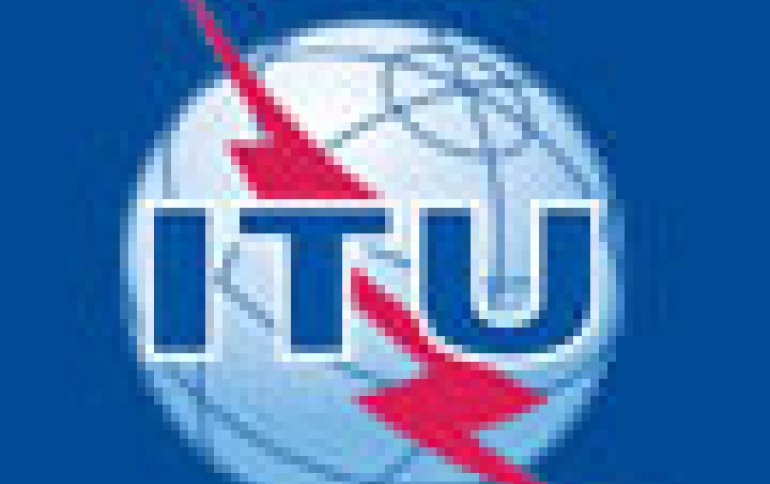
ITU Approves H.265 Video Standard
A new video coding standard building on the ITU-T H.264 /
MPEG-4 AVC and opening the door to future video
transmission using only half the bandwidth was agreed by
ITU members on Friday.
The new standard, known informally as - High Efficiency
Video Coding - (HEVC) will need only half the bit rate of
its predecessor, ITU-T H.264 / MPEG-4 Part 10 - Advanced
Video Coding - (AVC), which currently accounts for over 80
per cent of all web video.
ITU-T's Study Group 16 has agreed first-stage approval (consent) of the much-anticipated standard known formally as Recommendation ITU-T H.265 or ISO/IEC 23008-2. It is the product of collaboration between the ITU Video Coding Experts Group (VCEG) and the ISO/IEC Moving Picture Experts Group (MPEG).
Dr Hamadoun I. Toure, Secretary-General, ITU: "ITU-T H.264 underpinned rapid progression and expansion of the video ecosystem, with many adopting it to replace their own proprietary compression codecs. The industry continues to look to ITU and its partners as the global benchmark for video compression, and I have no doubt that this new standard will be as effective as its predecessor in enabling the next wave of innovation in this fast-paced industry."
ITU-T H.264 / MPEG-4 AVC is deployed in products and services from companies including Adobe, Apple, BBC, BT, France Telecom, Intel, Microsoft, Motorola, Nokia, Polycom, Samsung, Sony, Tandberg, Toshiba and others to deliver high definition video images over broadcast television, cable TV, a variety of direct-broadcast satellite-based television services, Blu-Ray disc formats, mobile phones, videoconferencing tools, digital storage media, and Internet Protocol television (IPTV). It remains the most deployed global video compression standard.
The new standard is designed to take account of advancing screen resolutions and is expected to be phased in as high-end products and services outgrow the limits of current network and display technology.
Companies including ATEME, Broadcom, Cyberlink, Ericsson, Fraunhofer HHI, Mitsubishi and NHK have already showcased implementations of HEVC. The new standard includes a "Main" profile that supports 8-bit 4:2:0 video, a "Main 10" profile with 10-bit support, and a "Main Still Picture" profile for still image coding that employs the same coding tools as a video "intra" picture.
The ITU/ISO/IEC Joint Collaborative Team on Video Coding (JCT-VC) (formerly JVT) will continue work on a range of extensions to HEVC, including support for 12-bit video as well as 4:2:2 and 4:4:4 chroma formats. Another important element of this work will be the progression of HEVC towards scalable video coding. The three bodies will also work within the Joint Collaborative Team on 3D-Video (JCT-3V) on the extension of HEVC towards stereoscopic and 3D video coding.
ITU-T's Study Group 16 has agreed first-stage approval (consent) of the much-anticipated standard known formally as Recommendation ITU-T H.265 or ISO/IEC 23008-2. It is the product of collaboration between the ITU Video Coding Experts Group (VCEG) and the ISO/IEC Moving Picture Experts Group (MPEG).
Dr Hamadoun I. Toure, Secretary-General, ITU: "ITU-T H.264 underpinned rapid progression and expansion of the video ecosystem, with many adopting it to replace their own proprietary compression codecs. The industry continues to look to ITU and its partners as the global benchmark for video compression, and I have no doubt that this new standard will be as effective as its predecessor in enabling the next wave of innovation in this fast-paced industry."
ITU-T H.264 / MPEG-4 AVC is deployed in products and services from companies including Adobe, Apple, BBC, BT, France Telecom, Intel, Microsoft, Motorola, Nokia, Polycom, Samsung, Sony, Tandberg, Toshiba and others to deliver high definition video images over broadcast television, cable TV, a variety of direct-broadcast satellite-based television services, Blu-Ray disc formats, mobile phones, videoconferencing tools, digital storage media, and Internet Protocol television (IPTV). It remains the most deployed global video compression standard.
The new standard is designed to take account of advancing screen resolutions and is expected to be phased in as high-end products and services outgrow the limits of current network and display technology.
Companies including ATEME, Broadcom, Cyberlink, Ericsson, Fraunhofer HHI, Mitsubishi and NHK have already showcased implementations of HEVC. The new standard includes a "Main" profile that supports 8-bit 4:2:0 video, a "Main 10" profile with 10-bit support, and a "Main Still Picture" profile for still image coding that employs the same coding tools as a video "intra" picture.
The ITU/ISO/IEC Joint Collaborative Team on Video Coding (JCT-VC) (formerly JVT) will continue work on a range of extensions to HEVC, including support for 12-bit video as well as 4:2:2 and 4:4:4 chroma formats. Another important element of this work will be the progression of HEVC towards scalable video coding. The three bodies will also work within the Joint Collaborative Team on 3D-Video (JCT-3V) on the extension of HEVC towards stereoscopic and 3D video coding.


















